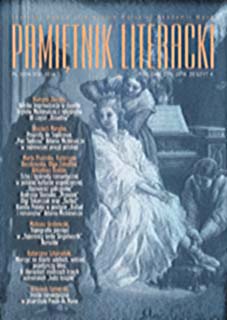Z lektur Bunga: Gabriele D’Annunzio, „Rozkosz” („Il piacere”)
From Bungo’s Readings: Gabriele D’Annunzio, “Il Piacere” (“The Child of Pleasure”)
Author(s): Wojciech SztabaSubject(s): Language and Literature Studies, Studies of Literature
Published by: Instytut Badań Literackich Polskiej Akademii Nauk
Keywords: Gabriele D’Annunzio's "Il piacere";Stanisław Ignacy Witkiewicz;Oskar Wilde's "The Picture of Dorian Gray";Witkiewicz's "The 622 Downfalls of Bungo";D'Annunzio's "Il fuoco" and "Trionfo della morte"
Summary/Abstract: “Dear Dorian d’Ugenta,” Leon Chwistek wrote in his letter to Stanisław Ignacy Witkiewicz, making a double allusion to his friend’s literary inspirations, namely to Oscar Wilde’s novel "The Picture of Dorian Gray" and Gabriele D’Annunzio’s "Il piacere" ("The Child of Pleasure"), in the latter of which the character is Andrea Sperelli, count Ugenta. D’Annunzio’s work played a crucial role in forming "622 upadki Bunga" ("The 622 Downfalls of Bungo"), which is evidenced by the similarity of topics and the modes of their formal presentation. Young artists, protagonists of the two pieces, are embroiled into a merge of life and art. The novels’ titles are complementary – Andrea and Bungo suffer defeat since fallacious pleasure inevitably leads to a downfall. The "622 Downfalls of Bungo" is to a great extent an autobiographical novel. Similarly, D’Annunzio would plait into his works such as "Il fuoco" ("The Flame of Life") or "Trionfo della morte" ("The Triumph of Death") facts from his own life.
Journal: Pamiętnik Literacki. Czasopismo kwartalne poświęcone historii i krytyce literatury polskiej
- Issue Year: 2016
- Issue No: 4
- Page Range: 161-181
- Page Count: 21
- Language: Polish

